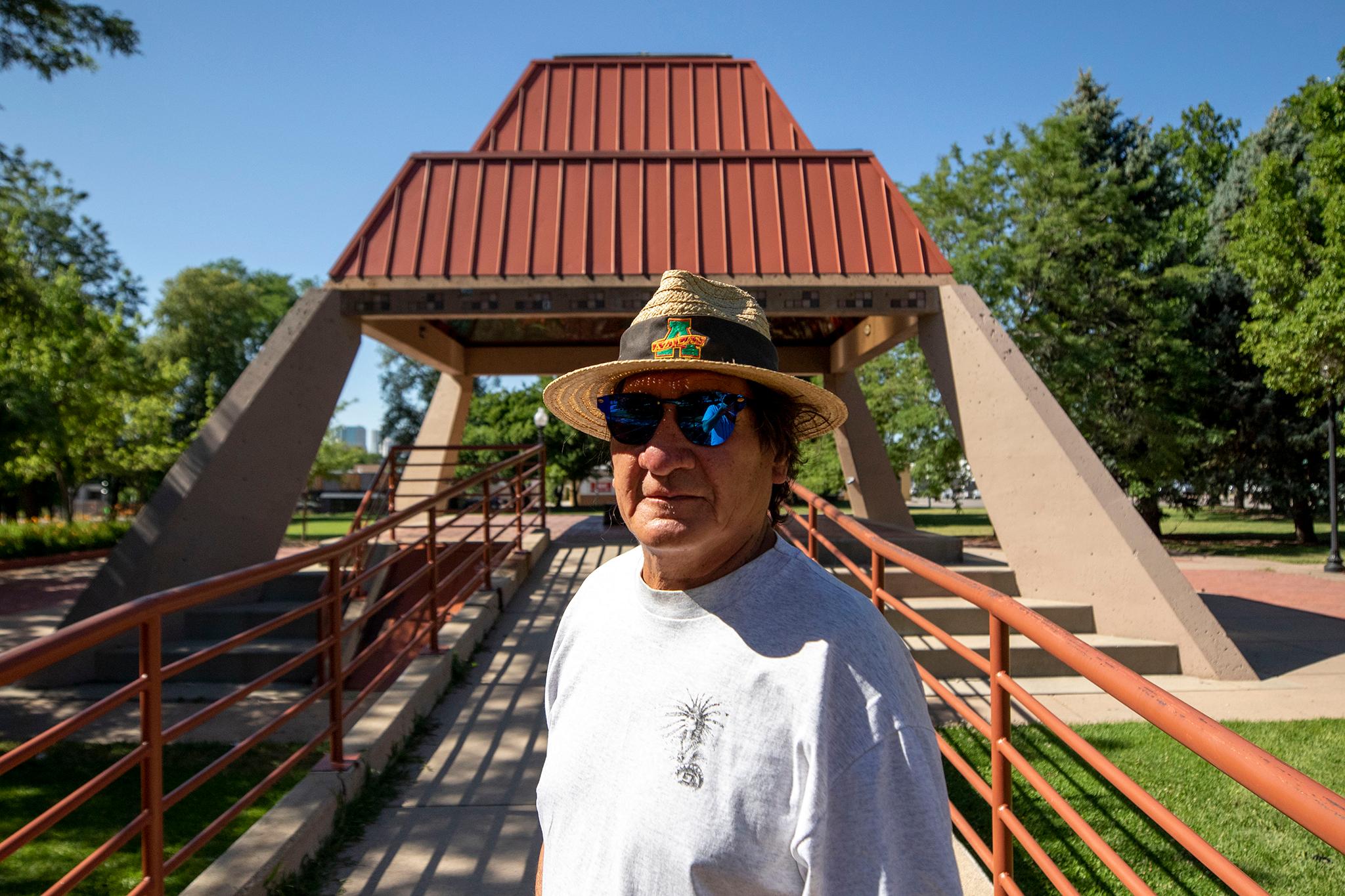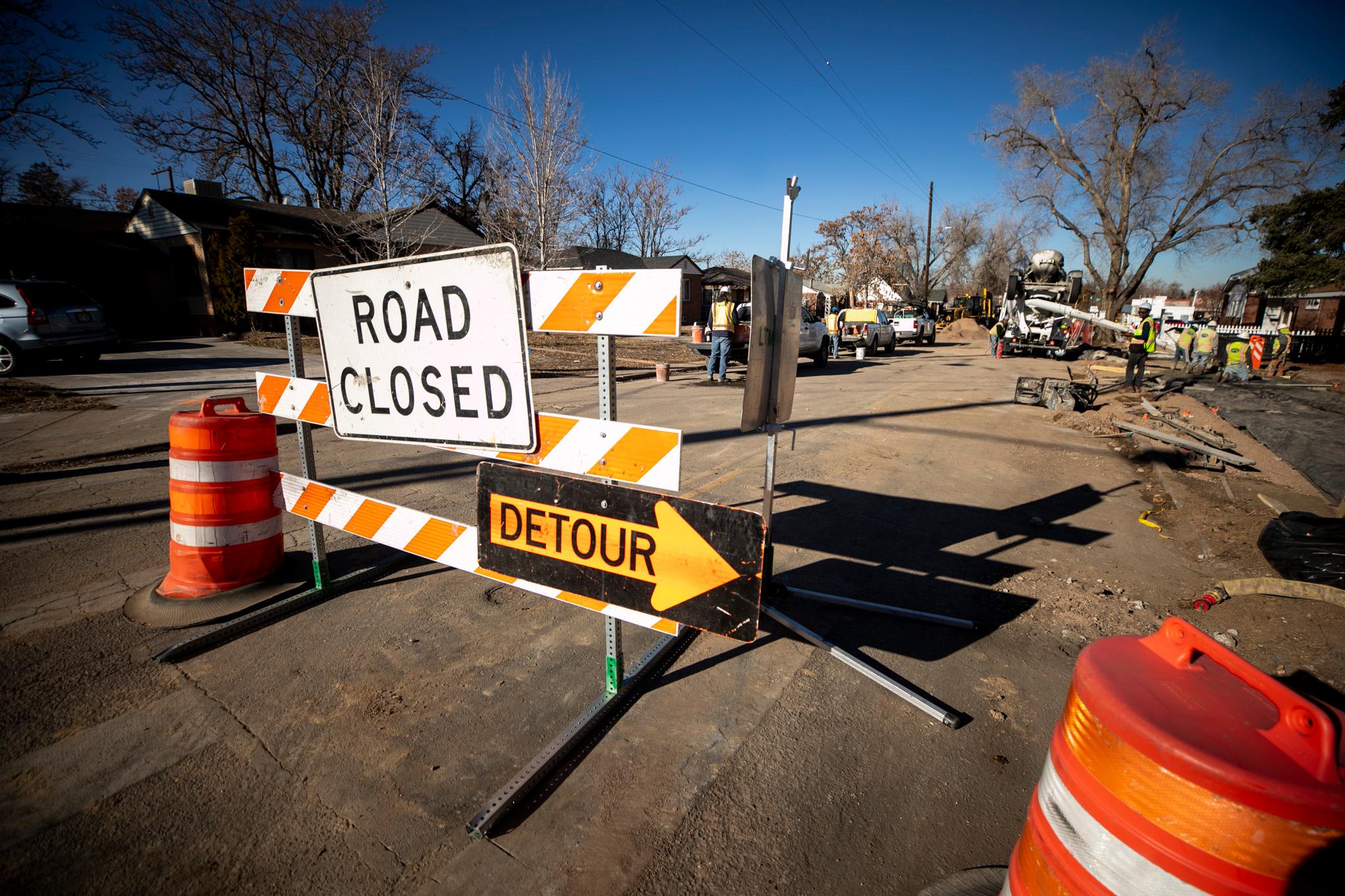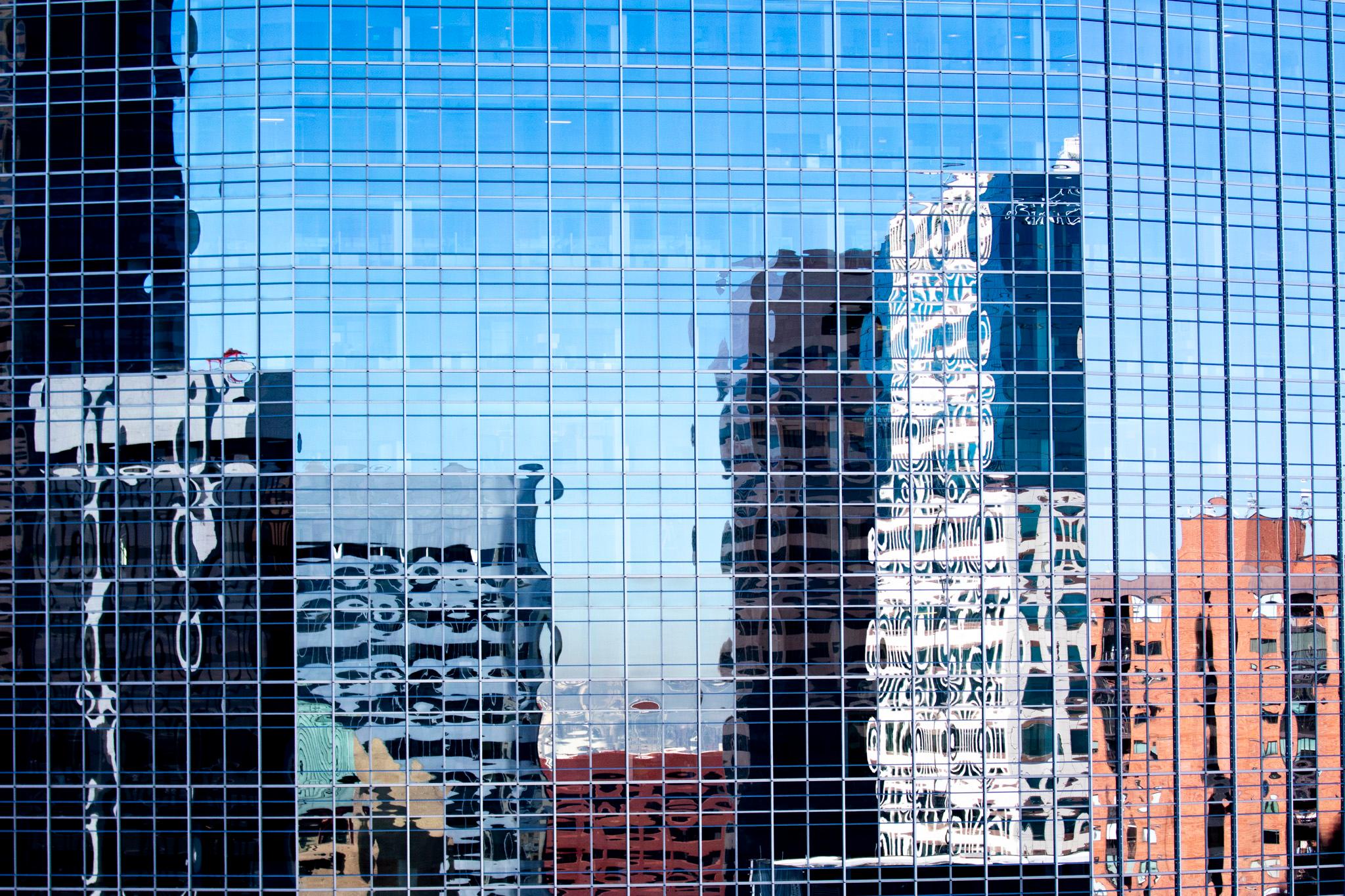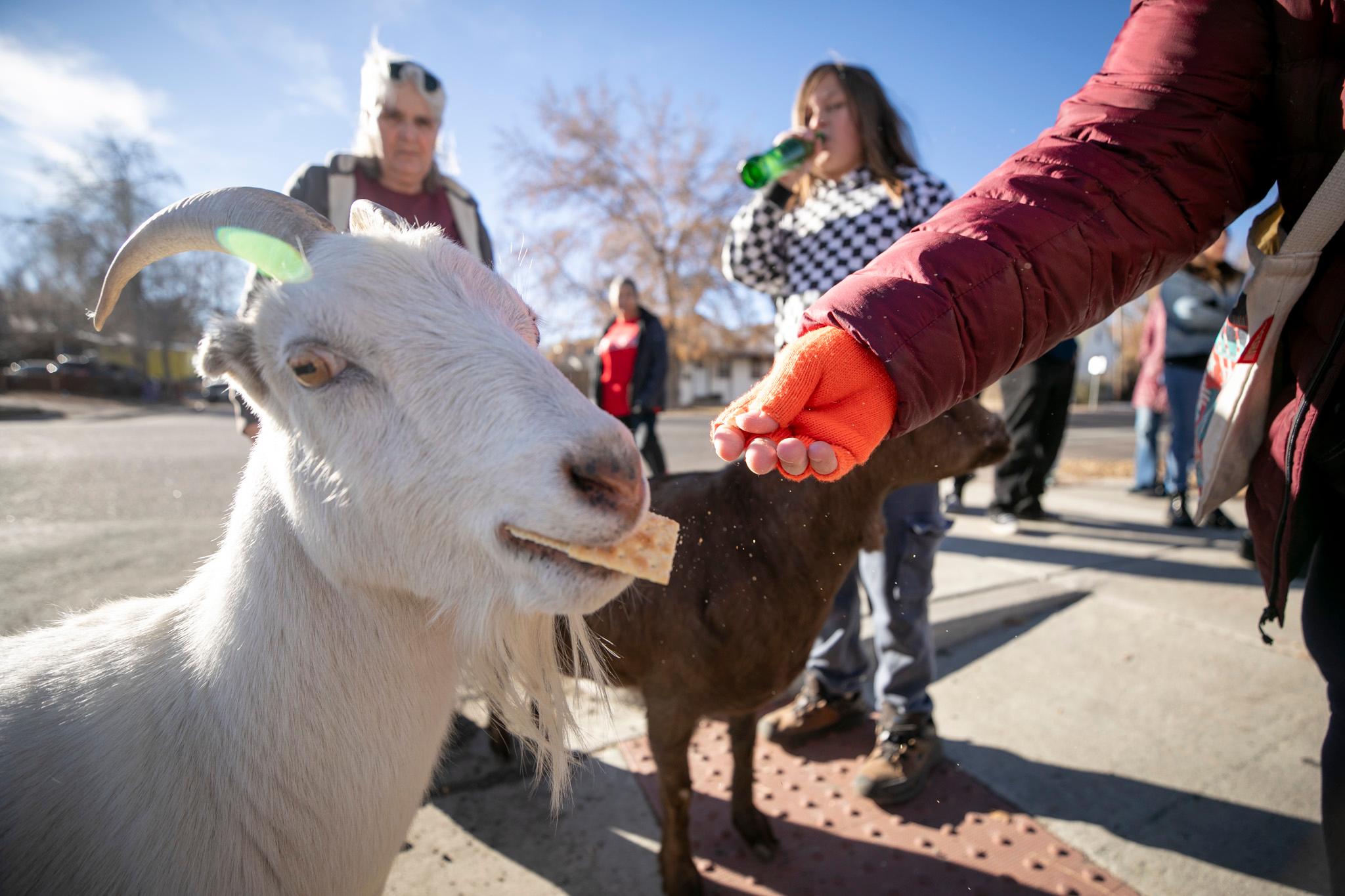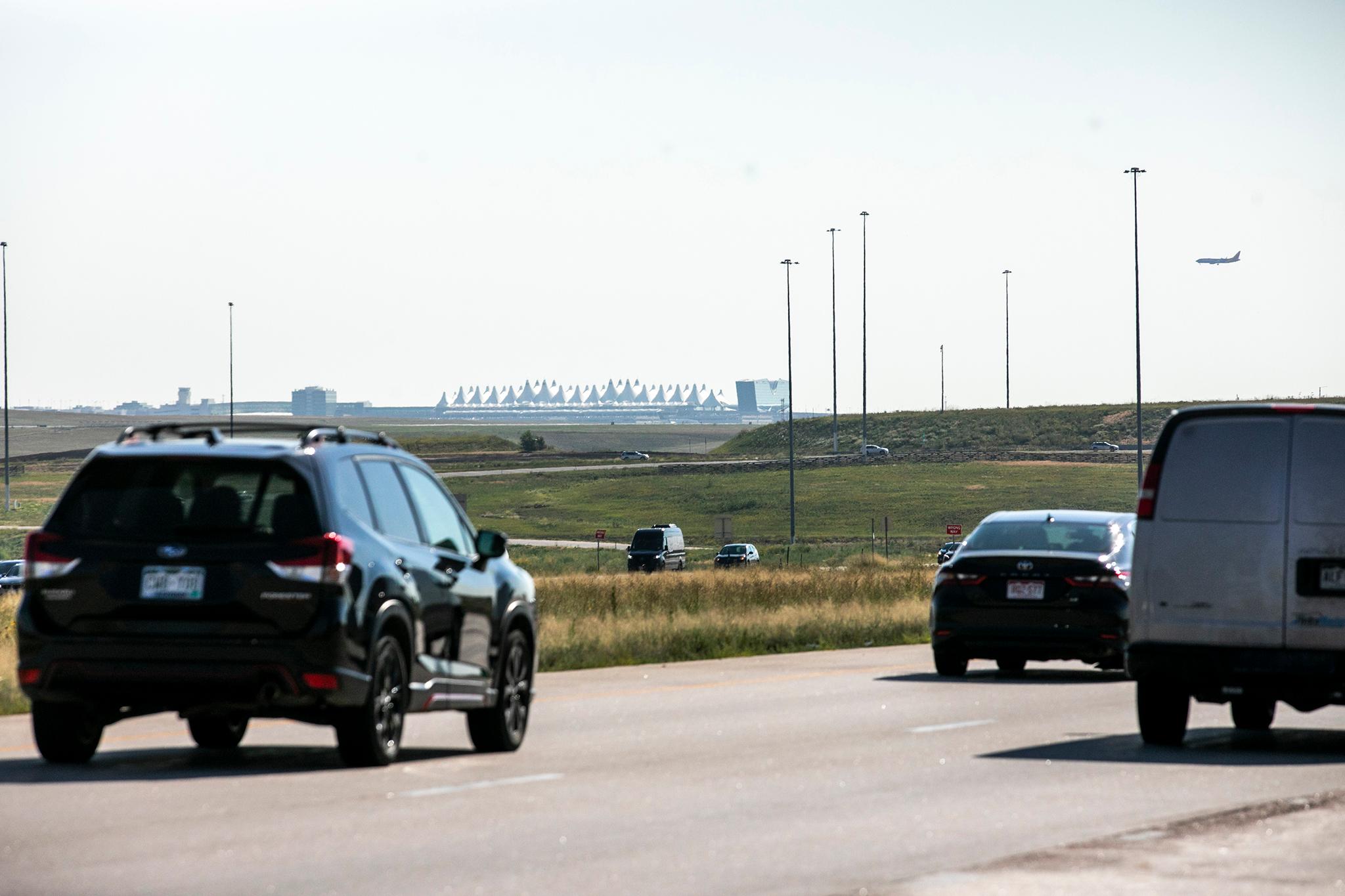Arturo "Bones" Rodriguez has waited five decades for this moment.
On Monday, the longtime activist stood on green space in Sunnyside that was once a playground for him and other 20-something Chicanos back in the day.
Even back then, Rodriguez and his friends were advocating that the city rename the park, which still bears the name of Christopher Columbus. But the Italian colonizer's days are coming to an end, at least in Denver. Councilwoman Amanda Sandoval recently launched the official process to rename the park what it's unofficially been referred to for years: La Raza.
The sign that names the park is gone, removed by the city last Friday as a preemptive measure to avoid the vandalism other controversial signs and statues in Denver have seen lately.
But for Rodriguez and others who grew up nearby, the city's move marked the beginning of something that he and others have worked toward for 50 years.
"Seeing it (gone) was a very joyful moment," Rodriguez said. "I felt the sun. I faced the sun. Mentally, I gave my thanks and I said, 'We got work to do.'"
He and other Northsiders have been calling the Sunnyside neighborhood park in northwest Denver La Raza Park since at least 1970, when Rodriguez, then 20, said a young man who lived down the street suggested the new name.
Rodriguez, 71, was the first Chicano manager of the park's pool and joined others in advocating for a new name during that time. He was hired as the manager in 1971.
"It was our Playstation," Rodriguez said as he stood in the central kiosko at the park, where the pool used to be. "It was a place where we hung out all year long. It didn't matter. When there was no pool, we recreated, we played handball in the (empty) pool."
Rodriguez helped stage the "splash-ins" at the pool that led to local Chicanos effectively taking over the park by 1971. He said he and other young people would "bum-rush" the pool when it would open in the afternoons. (The pool is no longer there; Rodriguez said it used to be near the space now occupied by the iconic kiosko at the park.)
It became the hangout spot, a place where Chicanos could get jobs and, as Rodriguez puts it, help figure out their cultural identity as they slowly integrated into the national Chicano movement. In 1971, Rodriguez joined Rodolfo "Corky" Gonzales' activist organization, the Crusade for Justice, and married one of Gonzales' daughters.
After Councilwoman Sandoval submitted a letter to the city requesting the park's renaming, decades of work -- of protests, of marches, of confrontations with police -- seem like they're coming to a close, Rodriguez said.
"The timing, 50 years later, is picture-perfect, if you will," he said. "The consciousness of the world is now on Columbus and other invaders, Spanish, French, and so forth."
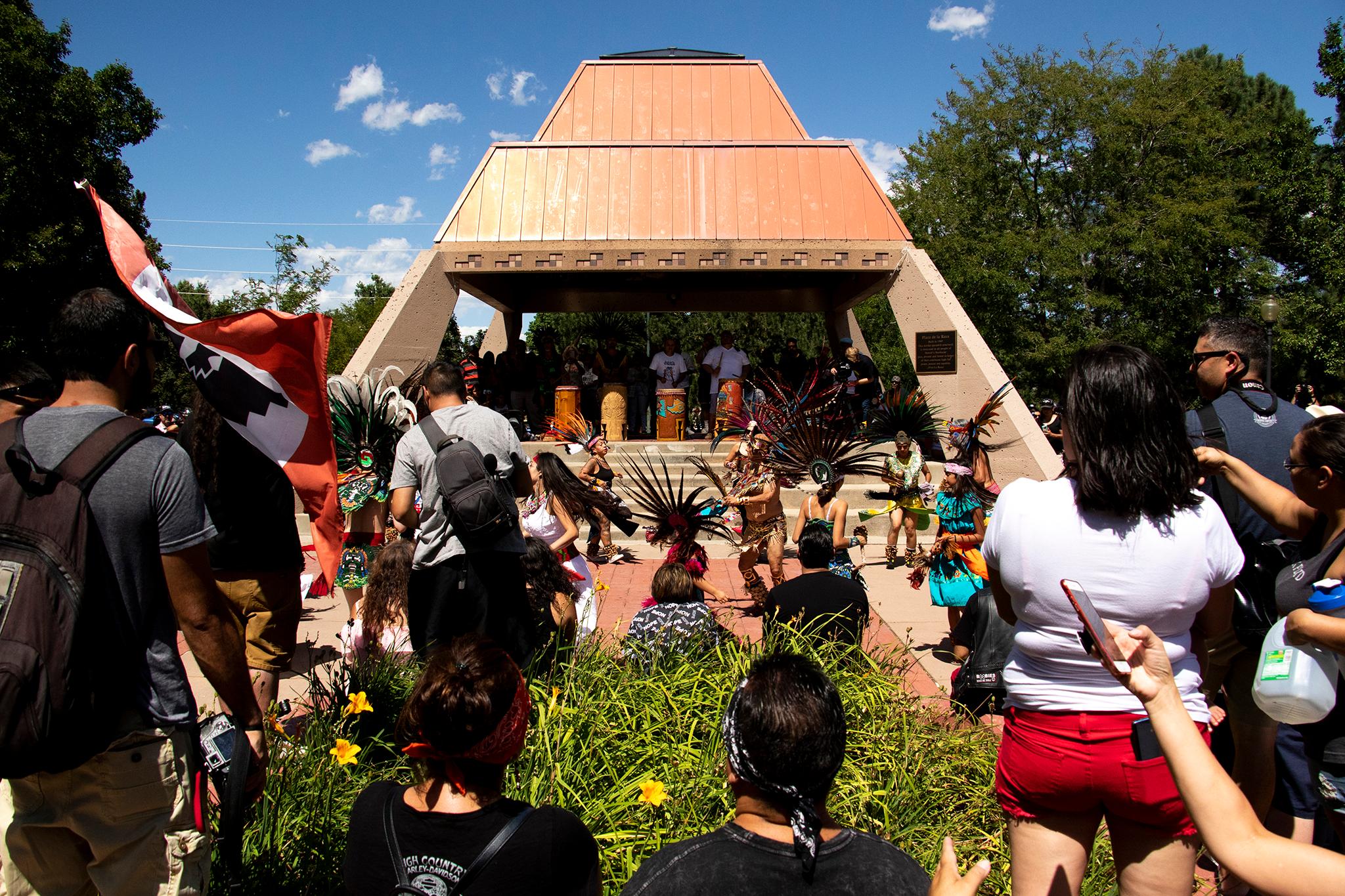
The park was more than just a play space for Rodriguez and his friends. In June 1981, protesters and police clashed during the annual celebration marking the pool's takeover in 1971. Eduardo Lucero, 77, who has been friends with Rodriguez since the 1970s, was there that day with his wife and their son. A news report at the time said police considered the event illegal since it didn't have a permit. But organizers said they had run the event without a permit during prior years as part of an informal celebration.
"What I think was going on was I think they wanted to pick a fight with us because they knew the Crusade was there," Lucero said.
People allegedly threw rocks and bottles, prompting police to use tear gas and K9s. Nineteen people were arrested. Lucero said residents at the park had been harassed by police even before that incident, including some encounters Lucero said involved beatings. He called the June 1981 events traumatizing, something "he can't just get rid of."
"I'm glad it's happening," Lucero said about the name change. "I've been wanting to see it for years."
Councilwoman Sandoval promised during her campaign that she'd rename the park.
Sandoval grew up knowing Rodriguez and was best friends with Rodriguez's daughter. She helped get a plaque on the kiosko dedicated to local residents, and she organized a community cruise starting at the park last year.
After Stapleton announced it would get a new name -- the current one comes from a former Denver mayor and KKK member -- Sandoval said she heard from local leaders, including state Sen. Julie Gonzales of Denver; Nita Gonzales, the former head of Escuela Tlatelolco, and Colorado Poet Laureate Bobby LeFebre, to put the wheels in motion to rename Columbus Park.
"They just decided that now is the time," Sandoval said. "There's energy. People are looking for ways to make an impact for those who can't necessarily go down and protest, so this is another way to be a part of the change."
People across the country and are reconsidering the figures that some streets, statutes and even cities represent after yet another Black man, George Floyd, died in police custody. His death has launched a movement that has many institutions reconsidering their dedication to diversity.
It's easy for Rodriguez to connect Floyd's death to Columbus Park. He and others clashed with police in the early 1970s when the city started enforcing the park's curfew. The people who suggested the name change and demanded for jobs during the protests were mainly young people in the neighborhood. He said organizing at the time involved few adults.
"It was the youth that had the huevos, that had the guts to say, 'Hey, let's do this, we have nothing to lose,'" Rodriguez said.
The current movement against racism and police violence counts young people as its leaders, especially in Denver. He's happy to see young people protesting.
"It's full circle," Rodriguez said. "If you look at 1970, it was predominately young people. The adults were real hesitant."
Justine Sandoval, who grew up in the area and serves as president of the Denver Young Democrats, said the movement to change the park's name was led by students and youth. She grew up going to the park in the 1990s and calls Rodriguez a mentor.
"It was the gathering spot for the Chicano community," Justine Sandoval (no relation to Amanda) said.
Justine Sandoval and Rodriguez said the new name, La Raza, isn't meant to be taken for its literal translation, "the race," but for its more inclusive and figurative translation: "the people."
"We redefined it," Rodriguez said about the term. "We said it must include, number one, the Natives, and all the other cultures and races which make up our ethnic cultural experience and racial experience."
Justine Sandoval said removing the park's name was about confronting its namesake, Christopher Columbus, and the racism and colonialism the Italian explorer represents to some people of color. She said that during the time when Rodriguez and others started engaging more in their community, young people were learning more about what Columbus did and how his actions led to the genocide of Indigenous people in the modern-day Caribbean.
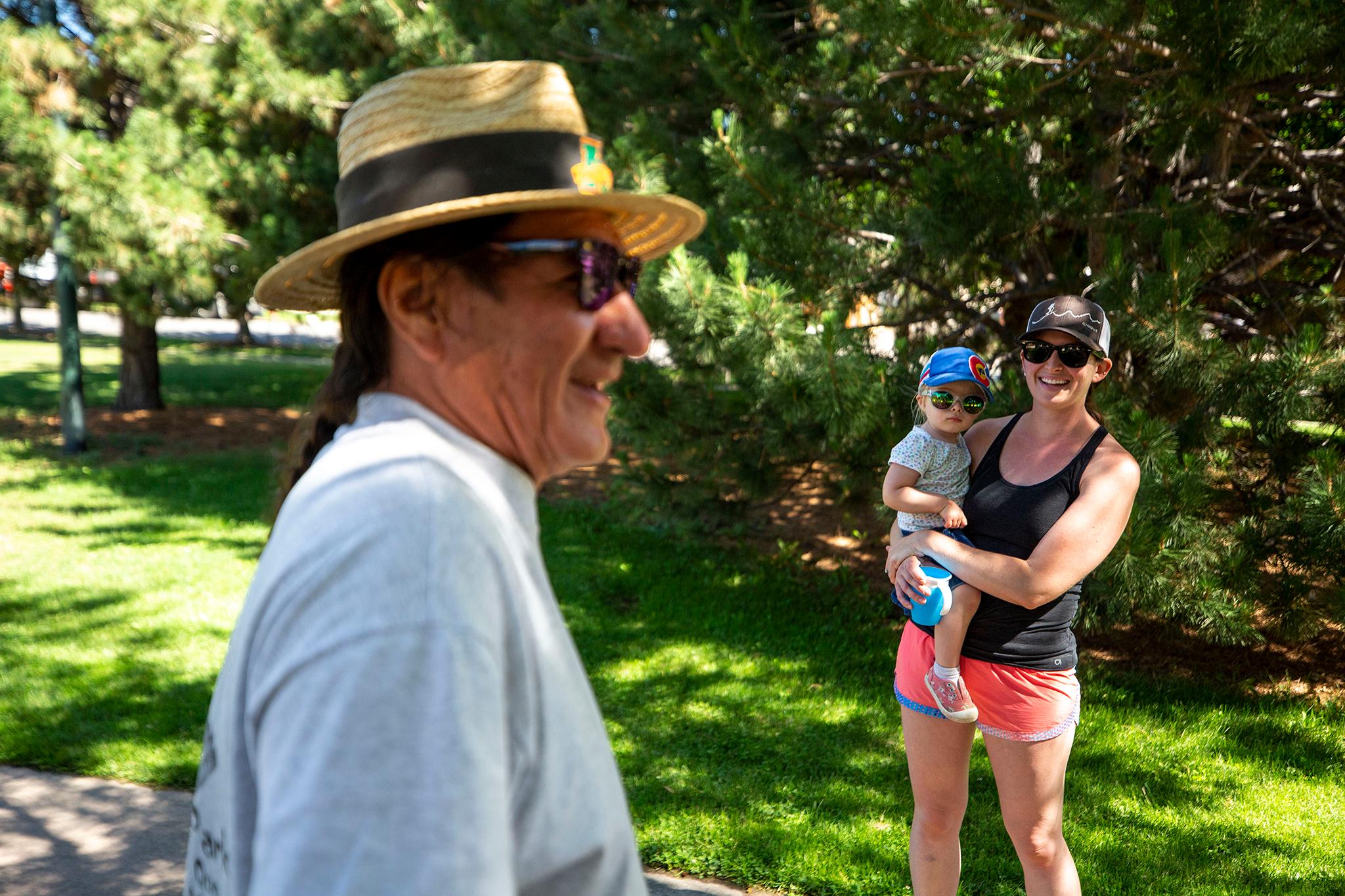
So to her, the name is "not about race," but rather an "anti-genocide and anti-colonial," message.
Councilwoman Sandoval notes in her letter that removing the name will benefit the Latino community and the city at-large by "ceasing to honor a symbol of oppression and generational trauma."
Based on research she did with help from the Denver Public Library, Councilwoman Sandoval learned the park was initially called the Northside Playground before local Italian-Americans raised $7,500 for improvements in 1931.
That same year, the Denver City Council renamed the park Columbus Park, which Councilwoman Sandoval notes in her letter may have been done to honor the community donation.
The area surrounding the park was primarily home to Latinos by the 1960s and early 1970s, after the Italian-American community moved to the suburbs. It blossomed into a cultural center for Latinos, especially local Chicano residents, by the 1970s.
"It's interesting to learn the different subsets of groups in the Northside and who knows what information and who's learned about what," Councilwoman Sandoval said. "It's been a fascinating process for me."
Now that a request has been formally submitted, Councilwoman Sandoval said the parks department will review it. If the department approves it, she can start collecting the 300 signatures from local residents necessary to petition the change. Once the signatures are collected, she will come before the parks advisory board to make her and the community's case.

The councilwoman said she doesn't necessarily think most younger people are aware of the history behind the park, though curiously, she notes many of them have only known this park as La Raza Park. She said people may not have learned about it unless they took classes like Chicano Studies, which Rodriguez used to teach Metro State University and other schools.
Rodriguez still has quite a bit of teacher left in him. He approached a woman at the park while she was walking with her young daughter.
"Excuse me, do you know the history of this park?" Rodriguez said, before embarking on a quick lecture.
Correction: This article has been updated to include Rodriguez married one of Gonzales' daughters, not sisters, and the day the Columbus Park sign was removed, which was a Friday, not a Sunday.

